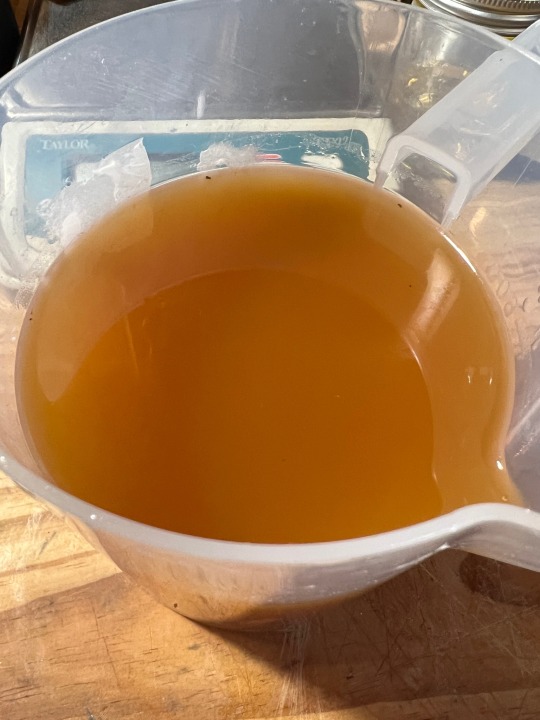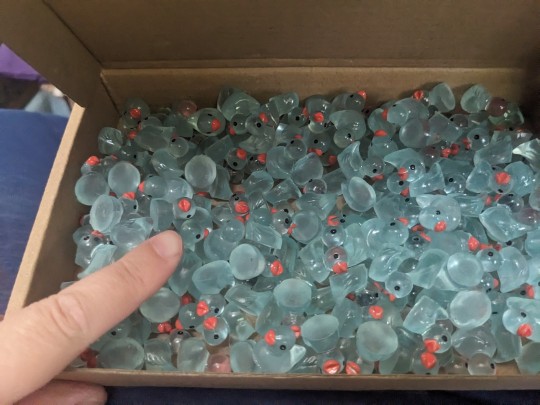#Resins
Explore tagged Tumblr posts
Text


Horse figure of the day: Frida Horses "Ben"
221 notes
·
View notes
Text

Recycling the unrecyclable: New method reclaims materials from epoxy resins and composites
Epoxy resins are coatings and adhesives used in a broad range of familiar applications, such as construction, engineering and manufacturing. However, they often present a challenge to recycle or dispose of responsibly. For the first time, a team of researchers, including those from the University of Tokyo, developed a method to efficiently reclaim materials from a range of epoxy products for reuse by using a novel solid catalyst. The work has been published in Nature Communications. There's a high chance you are surrounded by epoxy compounds as you read this. They are used in electronic devices due to their insulating properties; clothing such as shoes due to their binding properties and physical robustness; building construction for the same reason; and even in aircraft bodies and wind turbine blades for their ability to contain strong materials such as carbon fibers or glass fibers.
Read more.
#Materials Science#Science#Recycling#Epoxy#Resins#Composites#Adhesives#Catalysts#Materials processing#Fiber reinforcement#Fibers#University of Tokyo
27 notes
·
View notes
Text

Illustration detail from a Bakelite Plastics promotional postcard - 1938.
#vintage illustration#vintage advertising#bakelite#bakelite plastics#plastics#plastic products#chemistry#bakelite company#molded plastics#resins#polymers#chemical companies#plastic manufacturers#union carbide#vinyl#union carbide and carbon corporation#deco design#art deco#vintage postcards#industry#science#product design#industrial design
15 notes
·
View notes
Text



Well, ain’t this a cute little fire hazard?! Welcome my fully dressed protection and cleansing candle! I definitely had to sit by this one to make sure it didn’t set itself ablaze and it actually did a decent job. I had one scare, but hey, that’s what you keep sand nearby for!
For all witches, always practice fire safety! I do not suggest leaving a candle like this alone.
#witch#witchcraft#pagan#paganism#witchblr#eclectic witch#eclectic witchcraft#green witch#green witchcraft#herbs#candle magic#candles#resins
19 notes
·
View notes
Text

Last photo if you are following along with the resin clarification. It took a full day to render the resin out of the wood and I let it cool overnight before straining this morning. I’ve never had a resin infused oil turn so orange. It’s viscous too so there was a lot of resin trapped in the bark. Despite the destruction of my kitchen I am very happy with the results.
6 notes
·
View notes
Text
I offered to come check on my friend's animals while she's away for the long weekend

She thinks I'm joking

But I'm ready
52K notes
·
View notes
Text




ℑ𝔩𝔩𝔲𝔪𝔦𝔫𝔞𝔱𝔢𝔡 𝔐𝔞𝔫𝔲𝔰𝔠𝔯𝔦𝔭𝔱 🐉 Inspired by medieval manuscripts and embellished tales of heroism | webstore link
#Illuminated Manuscript#D20#chonk d20#40mm d20#dnd#ttrpg#dice#dungeons and dragons#handpainted dice#resin dice
10K notes
·
View notes
Text
Global Demand for Polypropylene Resins: Key Insights for 2024-2030
The global Polypropylene Resin Market is set to reach $110,610 million by 2030, growing at a 4.1% CAGR. With its versatile applications in automotive, packaging, and construction, polypropylene resin offers high durability, flexibility, and impact resistance. Major industry growth drivers include rising construction activities and surging demand in the automotive sector. Despite challenges posed by fluctuating raw material prices, the market is poised for expansion. Explore how polypropylene resin is shaping the future of industrial applications.
#polypropylene#packagingindustry#automotive#construction#resins#markettrends#polyolefins#industrialgrowth#sustainability#marketforecast
0 notes
Text

Horse figure of the day: Animal Artistry Resin Arabian Mare "Venus"
96 notes
·
View notes
Text

Protein denaturation provides a path toward more sustainable 3D printing of photoresins
The vast majority of photoresins for 3D printing (also referred to as additive manufacturing or AM) and related technologies are toxic, non-biodegradable, and sourced from unsustainable feedstocks. Non-traditional approaches to 3D printing offer a way to break free of the traditional confines of unsustainable petroleum-based reagents and chemical methods that require toxic monomers. A recent collaboration between the University of Wisconsin's Prof. AJ Boydston (Department of Chemistry) and Prof. Audrey Girard (Department of Food Science) has accomplished the first demonstration of additive manufacturing via protein denaturation (AMPD). The paper is published in the journal Green Chemistry. The AMPD concept leverages a recently invented AM method that uses photothermal transduction to convert patterned light into heat, thus enabling the creation of 3D shapes in response to patterned heat (U.S. patent 11,597,145 issued March 7, 2023, assigned to WARF).
Read more.
#Materials Science#Science#Proteins#Biomaterials#Polymers#Resins#3D printing#Additive manufacturing#University of Wisconsin
9 notes
·
View notes
Text

Anthony Fineran (B 1981)
0 notes
Text





The process of making kyphi. I found a recipe online and it was such a pleasing process that I thoroughly enjoyed! A combination of fruit, honey, wine, and other aromatic resins and herbs has made for one of the most fragrant incenses I have ever smelled and they aren’t even burning yet! Now, they sit out for the next week or so to set. Cannot wait to use them as an offering!
#witch#witchcraft#pagan#paganism#eclectic witch#eclectic witchcraft#green witch#green witchcraft#herbs#resins#incense#offerings#kyphi
11 notes
·
View notes
Photo


Encased in resin, 840 bars of soap stand frozen in time 🧖♀️꩜
16K notes
·
View notes
Text
Synthetic Leather Market: Exploring Sustainable Prospects

The history of synthetic leather dates back to the mid-19th century when it was produced in response to a limited supply of natural leather. Pyroxylin-infused cotton fabric was among the earliest substitutes, largely used in bookbinding and upholstery. Since then, this sector has grown tremendously for the right reasons. With growing consumer consciousness about animal cruelty and technological advancements, materials like polyurethane (PU) and polyvinyl chloride (PVC) have gained traction to enhance the durability and versatility of faux leather, making it ideal for use in footwear, clothing, furniture, and automotive interiors. Our estimates signify that the global synthetic leather market will reap revenue worth $57.90 billion by 2030, growing at a CAGR of 7.48% during the forecast period 2023-2030.
For businesses, synthetic leather has opened various opportunities owing to its durability and water-resistant properties, required elements for products to withstand the test of time. For instance, BASF’s synthetic leather includes thermoplastic PU Elastollan offering wear resistance to car seats.
While the varied material composition is one aspect, the veganism trend has widened the overall scope of the synthetic leather market.
Rise of Faux Leather: Vegan Uprising Intersects Durable Design
Vegan fashion has emerged as a prominent topic, in addition to sustainability and digitalization, in the textile and fashion industry. According to PETA, cow leather harms the environment almost 6 times more than plant-based fabric. And thus, the growing awareness about animal cruelty, in addition to the demand for cost-effective, durable products, has influenced several brands to collaborate with famous personalities to expand their footing in the vegan space. For instance, Converse partnered with actor Millie Bobby Brown to launch its line of vegan shoes, whereas singer Justin Bieber launched a fashion line named Drew House, with a 100% vegan range.
As per PETA, high-fashion events such as Helsinki Fashion Week have also banned leather clothing. Even the likes of Versus Versace and Givenchy promoted eco-leather products to gain the attention of millennial consumers. Triton’s analysis states that during the forecast period 2023-2030, the clothing category is expected to witness revenue growth at a CAGR of 6.68%, which will facilitate lucrative opportunities for manufacturers in the faux leather market.
Moreover, the market is growing as the vegan population soars globally, especially in the UK, Germany, Poland, Italy, Spain, and others. As per the Vegan Society, over the decade, the vegan population base surged from approximately 150, 000 to around 542, 000 in the UK. This demographic shift resulted in around a 36% increase in plant-based shoes in 2021 across the nation. Hence, with more consumers hopping on this trend, regions like Europe have immense development potential during the forecast years.
Bio-Based Leather: An Ecological Opportunity
A common misconception is vegan products are biodegradable. In reality, they are animal-free but might include components like PU and PVC that are not sustainable. This has prompted high demand for bio-based materials, including flax, cactus, cotton, corn, and soybean, to produce synthetic leather. Among these fabrics, pineapple-based leather – Pinatex has gained immense popularity, with brands like Hugo Boss, Nike, and Altiir, including it in the manufacturing process.
Similarly, the growing use of bio-based leather in the automotive sector is another key trend. In terms of end-use, the automotive industry is likely to witness the fastest growth at a CAGR of 8.24%. This development is backed by automakers like Bentley that have included plant leather in its electric vehicle interior. Besides this, the increasing need for lightweight materials with various hues and textures have offered lucrative opportunities for contenders to innovate their portfolio and gain market dominance by including bio-based materials.
Our report analysis indicates the bio-based leather type is estimated to register the fastest growth at a CAGR of 8.51% over the 2023-2030 forecast period.
Further, analysis by Triton portrays that despite the high cost compared to PU and PVC leather, bio-based materials will witness high growth across North America and Europe markets. In the US, the developed automotive industry, cutting-edge processing technologies, skilled workforce, and expanding R&D are key growth enablers for the North America synthetic leather market.
Synthetic Leather Market: Growing Applications offer Limitless Possibilities
For years, synthetic leather was used for footwear, which was later modernized with the advent of the automotive and digital age. Ever since, artificial leather has gained significance in several applications as a cost-effective solution, a most sought-after attribute among industrial manufacturers.
Clothing, automotive, and footwear are popular end-user sectors. However, the application has extended to machine belts, gloves, bags, wallets, upholstery purposes, etc. These uses have ultimately influenced strategic steps like Prada’s opening of around 27 stores in the Asia-Pacific. Such developments are set to propel growth opportunities for the global synthetic leather market.
FAQs:
Q1) What is the synthetic leather market size?
The global synthetic leather market attained revenue worth $32.53 billion in 2022 and is expected to reap $57.90 billion by 2030.
Q2) Which are the key end-users of synthetic leather?
Clothing, furnishing, footwear, automotive, and bags & wallets are key end-users of synthetic leather.
#Synthetic Leather Market#Chemicals#Materials#Polymers#Resins#triton market research#market research reports
0 notes
Text



A new scene, flooded ruins of amphitheatre. Eh, overdid it with the waves. Carved shell fragments, stone, quartz sand and resin in a spisula shell.
#amphitheatre#arena#ancient greek#ancient rome#ruins#sea shells#sea#flooded#underwater#ancient ruins#epoxy resin art#resin#miniature#diorama#miniature sculpture#carving#beach combing#spisula#my art#art#seascape#amphitheater
5K notes
·
View notes